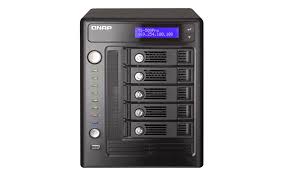2024.07.06 NAS TS-509 Pro vs Raspberrypi 4
 Thunder
Thunder
TS-509Pro

The NAS I used to deploy Creww at home is called the TS-509 Pro, released by QNAP in 2009. Its specifications aren't particularly impressive; let's take a closer look below.
Product Specifications
CPU:
Intel Celeron Processor 1.6GHz
The Celeron processor has a dual-core configuration. One CPU contains two independent processing units.
Designed for low power consumption, it's suitable for mobile devices where low heat generation and long battery life are important.
Appropriate for everyday office tasks, web browsing, and multimedia consumption.
Economical.
As of 2009, it belongs to the entry-level CPU line, characterized by low power consumption and affordability.
RAM:
1GB DDRII RAM, 128MB flash (DOM)
DDRII RAM uses Double Data Rate technology, offering faster data transfer speeds.
1GB of memory provides sufficient performance for everyday computing tasks.
The 128MB flash memory (DOM, Disk on Module) is used for system booting and basic OS storage.
By 2009 standards, this specification is suitable for entry-level systems, capable of smoothly performing general office work and web browsing.
An economical yet efficient memory configuration, commonly used in home and educational PCs.
From a 2024 Perspective
Compared to modern NAS devices in 2024, the QNAP TS-509 Pro's performance is significantly outdated. Let's compare it with a Raspberry Pi:
CPU Comparison:
QNAP TS-509 Pro: Intel Celeron Processor 1.6GHz, dual-core
- Entry-level CPU by 2009 standards, suitable for basic office work and multimedia consumption.
Raspberry Pi 4: Broadcom BCM2711, quad-core Cortex-A72 (ARM v8) 64-bit SoC @ 1.5GHz
Modern ARM-based quad-core processor, suitable for multitasking and high-performance applications.
Similar clock speed, but significantly different in core count and architecture.
RAM Comparison:
QNAP TS-509 Pro: 1GB DDRII RAM
- 1GB capacity is very limited for running modern applications.
Raspberry Pi 4: Up to 8GB LPDDR4 RAM
- Up to 8GB of high-speed LPDDR4 RAM, capable of processing large data and running high-performance applications.
Other Comparisons:
Storage:
QNAP TS-509 Pro: Supports up to 5 SATA drives
Raspberry Pi 4: Supports microSD card and external storage via USB
Modern NAS devices support NVMe SSDs and higher capacity storage.
Network:
QNAP TS-509 Pro: Two Gigabit Ethernet ports
Raspberry Pi 4: Gigabit Ethernet, Wi-Fi support
Modern NAS devices support 2.5G or 10G Ethernet for faster network performance.
Power Consumption:
QNAP TS-509 Pro: Designed for low power consumption, but relatively high compared to modern ARM-based devices.
Raspberry Pi 4: Very low power consumption, highly efficient.
Conclusion
While the QNAP TS-509 Pro offered reasonable performance by 2009 standards, it's significantly outdated compared to modern NAS devices in 2024. The differences are particularly stark in CPU and RAM performance, as well as storage and network speeds. Modern low-power devices like the Raspberry Pi 4 offer more powerful performance and efficiency, better meeting contemporary computing needs.
And... most importantly, let's talk about the price...
The QNAP TS-509 Pro was reportedly sold for about $899.99 (USD) when it was released in 2009.
Converting at a rate of 1$ = 1300 won, that's about 1.17 million won. It's shocking.
I remember some law I saw in the news before, but I couldn't recall it so I looked it up on the internet and it was Moore's Law. Is this comparable to Moore's Law? Anyway, it's a shocking selling price.
Of course, I like Raspberry Pi. I've tried various things with the 3B model and even bought some AVGO stock. However, these results are shocking. It's surprising that it performs worse than even a Raspberry Pi, which is considered to have relatively low specs. I think this is an example of how rapidly technology is advancing.
Subscribe to my newsletter
Read articles from Thunder directly inside your inbox. Subscribe to the newsletter, and don't miss out.
Written by

Thunder
Thunder
안녕하세요! Web개발을 공부하고 있는 윤종일 입니다. 현재는 Java 백엔드 개발을 깊게 파고들고 있어요! 제 궁극적인 목표는 풀스택 개발자가 되는 것입니다. 프론트엔드와 백엔드 모두를 자유롭게 넘나들며, 사용자에게 가치를 전달할 수 있는 완성도 높은 애플리케이션을 만드는 것이 목표입니다.